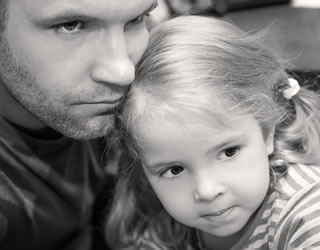
The deed’s been done; the label can be slapped on. I am officially a “child of divorce.”
Or is it a “child from a broken home”?
My parents’ get (divorce document) has yielded a discombobulated muddle of emotions: insecurity, sadness, anger, relief. The threads are hopelessly knotted together, and I’m slowly realizing that that’s the way it’s going to be. Divorce is not neat.
I was 21 when I heard that my parents were separating, and my first reaction was, “Thank G‑d. Finally.” My parents’ marriage had bumbled on dysfunctionally for decades, ultimately careening into a black hole of broken trust. No longer would we children have to feign bliss, pretending that all was dandy on the home front. The infection that had festered for years had finally pierced the skin, oozing out in a putrid finale of terrible choices.
I am officially a “child of divorce.”My mother had a severe personality disorder (though we didn’t realize this until much later). Her father had been physically abusive, her mother cold and apathetic, and she had never learned to love. With each year that she refused to get help, the disorder deteriorated, reducing a brilliant woman to a demented, disturbed soul. But outsiders couldn’t see this. On the surface, Mommy was a well-respected school principal who charmed audiences with her charisma, erudition and fantastic sense of humor.
In the meantime, my devoted father became an expert at propping up the fallen pieces, creating stability in a roiling sea of capriciousness and narcissism. Mommy couldn’t be relied on for anything, but Dad was a rock.
Though my brothers and I sensed the bomb ticking just beneath the surface, for the most part, life was good. We were secure. My father, by nature an Honest Abe, had become an expert in pretense, unconsciously pulling off the most masterful show of his life. Only as we got older did we begin grasping the depth of Mommy’s illness, and the impossibility of her maintaining a meaningful marital partnership.
In my freshman year of high school, I began to seethe at the hypocrisy in my parents’ marriage. Any tension in our home was almost always my mother’s doing, but to the world-at-large, she was a pedagogical marvel. Daddy, on the other hand, was deemed the unremarkable one of the two: kindhearted but low on talent. The injustice was infuriating.
Daddy assumed a horrid role: he became our buffer, stomaching the rage, the outbursts, the maddening illogic, so that we kids would emerge unscathed. The cost to his own emotional health was steep, but he was determined to protect us. Mommy had no maternal instinct. Daddy made up for it sevenfold.
On a subconscious level, Daddy knew the marriage wasn’t viable. But he was a can-do type who had never rocked the boat, and he wasn’t about to start. Whatever it took, he would keep it together, giving us the gift of a normal childhood. And to a great extent, he succeeded. Unlike many children of divorce, I don’t view my childhood as a series of shouting matches or hate-filled stares. Though the dysfunction was ever-present, lurking in the shadows, it exploded only intermittently. The sweet memories of my youth far outnumber the black ones.
In our home, we heeded Daddy’s unspoken plea not to upset the applecart. He so badly wanted to have a normal marriage—like his doctor-lawyer-Indian-chief pals—and we didn’t have the heart to shatter his illusions. So we began a decade-long dance of denial, Daddy and us, each waltzer awfully aware of the bald truth, but unwilling to confront it together. For if we collectively, openly acknowledged that the emperor wore no clothes, life as we knew it could not continue.
No longer would I have to deal with my resentment and anger aloneYears passed, and it finally happened. Mommy did something that seriously compromised my sister’s safety, and Daddy had no choice. The curtains had fallen, and the relief was profound. No longer would we have to present as the model family. No longer would I have to deal with my resentment and anger alone. No longer would I have to hide the truth from the same rabbis and mentors who had so adulated Mommy in the past.
The divorce was a public announcement of defect, and now, we could move on . . . and heal.
Being a child of divorce is a strange thing. You are the product of a wrecked union, a faulty fusion of souls. You bore witness to flawed relationship skills, to recurrent patterns of psychologically unsound behavior. The fear is constant: will you repeat those mistakes?
Today, a fully developed self-identity and a mature faith have helped me accept the reality that G‑d makes no mistakes. In the biblical song of Haazinu, Moshe avers this pillar of faith: “The Rock [G‑d]! Perfect are His works, for all His paths are justice.”
My childhood was warped in so many ways, but there is comfort in knowing it was tailor-made for me. G‑d wanted me to tackle this particular life test. My job now is to learn the lessons and build anew. I have emerged scarred, but I have also emerged with a unique understanding of people and relationships. Going forward, I must put that to use.
Friends have asked me if I wish my parents would have divorced earlier, before the underlying decay swelled into a foul, embarrassing debacle. But I’m reluctant to engage in easy Monday-morning quarterbacking.
As a young girl, could I have properly processed the storm of emotions, the sense of disorder that comes with divorce? I don’t know.
As an impressionable, self-conscious teen, could I have dealt with divorce’s societal stigma? I don’t know.
In the long run, would I have been better off had Daddy ended the diseased marriage earlier? I don’t know.
But of one thing I am certain: Daddy did his best. Amid miserable life circumstances, he was a fount of love and stability. When he could easily have crumbled and abandoned us, he was a lion: fiercely protective and radiating a strength that masterfully betrayed his inner despair.
Ours is a world of falsehood. Scintillating, clever Mommy wasOurs is a world of falsehood everyone’s darling; true-blue Daddy was mediocrity personified. In the World of Truth, however, our limited perceptions will be upended: we will behold seemingly unexceptional folk—those who went about their daily lives with consistency and faith, making selfless, G‑dly decisions with zero recognition—sitting on high, basking in the light of the Creator they sought to emulate.
Daddy, our hope is that when you look at us today—all happily married, with loving, stable spouses—your painful sacrifice will have been worthwhile.
© Copyright 2014, all rights reserved.
Essay
An Essay on Tzimtzum
From the teachings of Rabbi Schneur Zalman of Liadi
|
Introduction: Scholarship and Society
This is the third article in a series on the kabbalisitic concept of Tzimtzum. For the first two articles click here and here.
Kabbalists have long used the image of infinite light as a metaphor for divine revelation. But the infinite cannot be apprehended within the finite confines of human perception. Rabbi Schneur Zalman of Liadi, founder of the Chabad school of chassidism, advanced the idea that the essence of divinity lies beyond the impositions of this image, and can therefore be apprehended by everyone. In one breath he pushed the limits of divine knowledge to an unprecedentedly esoteric height and paradoxically declared that the loftiest peak is openly accessible to all.
The intimate essence of G‑d... is openly disclosed, and directly apprehended even by children.
Esoteric elitism and accessible populism are two poles between which every society oscillates. It was once widely believed that Chassidism arose as a populist movement seeking to undermine the authority of the rabbinic elite. While scholars have conclusively demonstrated this theory to be a gross oversimplification, the tensions between these poles cannot be entirely erased from the equation.
We have already seen how a scholarly disagreement amongst several Mediterranean Kabbalists in the late 1600s became a seminal point of contention between early Chassidim and their opponents. The dispute left the realm of scholarly debate and made real historical impact, not only in rabbinic circles, but for all the Jews of Eastern Europe. Moreover, the theological positions at stake had clear social implications. The non-literal interpretation of Arizal’s tzimtzum narrative, adopted by the chassidim, asserts that G‑d is immanently present throughout all existence and that the practice of mitzvot endows apparently mundane activities with the full transcendence of divine intimacy.
R. Schneur Zalman played a prominent role in this debate, but he also went beyond its parameters. The image of infinite light, he realized, hints that there is something more essential than the infinite revelation of divinity. Just as light must extend from a luminous source, so the infinite revelation of divinity must extend from the more intimate essence of G‑d. This intimate essence, he declared, is openly disclosed, and directly apprehended even by children.
The divine essence is not only imminently present everywhere but entirely transcends the categories of revelation and concealment.Previous discussions of the tzimtzum narrative centered on the light. R. Schneur Zalman shifted the focus to the luminary, to the essence of divine being. The earlier debate centered on the questions of whether tzimtzum renders the light absent from the created realm or simply conceals its presence. R. Schneur Zalman’s insight was that the divine essence is not only imminently present everywhere but entirely transcends the categories of revelation and concealment.
Such scholarly assertions cannot be divorced from their social implications. R. Schneur Zalman sought to articulate the ineffable core of divine being, and declared that this most esoteric pinnacle is accessible to all. In doing so he raised a plethora of questions: How can the ineffable be accessible? How can the absolutely esoteric be so obviously apprehendable? How can elitism coincide with populism?
To answer these questions, and to unpack the full import of R. Schneur Zalman’s teaching, we must delve into the rich tradition of rational and mystical thought within which his ideas are framed.
Abstraction and Imagery
A striking distinction between the rationalist and mystical traditions is that rationalists tend to articulate their positions in abstract conceptual terms, while mystics or kabbalists tend to use more tangible imagery. Arizal’stzimtzum narrative, beginning with the image of infinite light, is a classic example of the vivid visual analogies kabbalists employ.
Generally “light” (ohr) is understood as a kabbalistic metaphor for what rationalist thinkers might term a “flow” of vitality from G‑d to the created realm. The word “flow” (shefa) does not specify what is flowing. It has an abstract quality that can describe a flow of water as well as it describes a flow of knowledge. Accordingly, the phrase “a flow of divine influence” remains free of any specific associations. But when the word “light” is used to represent the same concept, an image of physical light immediately springs to mind. A flow of divine influence is presumably more a spiritual phenomenon than a physical one, but when the term light is used as its signifier the visual image is difficult to shake.
The kabbalists were not unaware of this shortcoming, but they had good reason to resort to a physical analogy. The specific associations attached to well-chosen images add layers of conceptual dimension, insight and complexity, which can faithfully accentuate the notions they are designed to represent. It was R. Schneur Zalman’s sensitivity to such visual and conceptual layers that enabled him to discover the elusive insight that is the subject of this article.
Specific associations attached to well-chosen images... can faithfully accentuate the notions they are designed to represent.Light has several distinct properties that serve to illustrate particular contours of the mystical notion of ohr. Two closely related properties will serve to illustrate the point. 1) Light, unlike sound, cannot penetrate an opaque barrier. When a luminary is eclipsed its light cannot flow forth. Light is therefore described as being “attached to its source” (davuk be-mekoro). 2) Light always remains transparent to its source, communicating something of the essential quality of the source. While there are many forms of light, we do not tar them all with the same brush. We often refer to the specific source of a given stream of light to describe its unique quality and characteristics. Light flowing from the sun is called sunlight, light cast by a fire is called firelight. Likewise we might refer to the harsh glare of electric light or to the soft glow of natural light. Accordingly, light is described as being “imitative of its source” (me’ain mekoro).
In these ways a flow of light is sharply distinguished from other models of communication, such as the flow of knowledge from one person to another. While knowledge can sometimes reflect or be traced back to its source, this is not one of the defining features of knowledge. If person A learns about something from person B and then repeats it to person C, person C may well think that person A is the originator of the idea. Person C may also think that it came to person A from an altogether different source. Only in rare cases is person C likely to detect certain features of an idea that betray the author's identity.
Unlike light, in other words, knowledge does not depend on a direct connection with its originator to sustain its flow (it need not remain “attached to its source”), and need not betray anything about its initial source (it is not necessarily “imitative of its source”). It is because light uniquely possesses these qualities that Kabbalists used it to invoke a very specific type of divine revelation; one which transparently reflects something of G‑d’s infinite self. The term “flow” may lift the notion to a more abstract plain, but it is empty of the rich conceptual content provided by the more vivid image of light.
Complex Models
This brings us back to Arizal’s tzimtzum narrative. Even at the first reading, the tzimtzum narrative harbors competing complexities. Arizal did not limit himself to a concise propositional statement, stated in abstract conceptual terms. To do so would be to talk himself into a box, to flatten multi-layered subtleties into one dimensional dogmas. Instead he painted a vibrant picture within which multiple perspectives are layered in coexistence.
The tzimtzum narrative is presented in three general phases: In phase one “all was filled with simple infinite light.” In phase two “this light was contracted” to leave “a hollow space.” In phase three “a single straight line (kav)was drawn forth from the infinite light” into the hollow space, from which “all the realms were emanated, created and made.”
The infinite light (ohr ain sof) initially signifies the absolute assertion of divine selfhood, and the utter exclusion of any concept of otherness. This “primal” or “essential” mode of divine revelation is so qualitatively potent that it cannot be reduced by quantitative degree. In order for form, finitude and otherness to be viable possibilities, it must be completely withdrawn, creating a conceptual vacuum (a “hollow space” or chalal) in which the creative process can unfold. Within this vacuum a “ray” of infinite divinity (ohr ha-kav) can be reasserted, not to the utter exclusion of otherness, but to emanate a progressively more opaque succession of divine forms and begin the process of creation.
If the first and last stages of this narrative are articulated in abstract propositional terms we are left with two mutually exclusive claims:
G‑d is one, but G‑d is not monolithic. The utter simplicity of the one G‑d embraces an unlimited spectrum of modalities.A) For G‑d, the very notion of creation is meaningless.
B) G‑d is the creator.
Arizal’s visual narrative provides a conceptual model within which we can perceive these contradictory claims as coexistential layers of perspective, each reflecting a different facet of the divine self. G‑d is one, but G‑d is not monolithic. The utter simplicity of the one G‑d embraces an unlimited spectrum of modalities. G‑d simultaneously executes the role of creator and utterly transcends that very role.
The human mind is attuned to linear thought; defining, distinguishing, analyzing and compartmentalizing each item within the wider scheme of things. It is difficult for us to imagine something to which the three dimensional bounds of time and space simply don’t apply.
Arizal did not want to flood our minds with a straightforwardly incomprehensible account of divine transcendence. Instead, he used narrative to incrementally delineate the disparate facets of singular divinity.
Abstract conceptual terminology is excellent for clear one-dimensional statements. But one-dimensional statements do not leave much room for depth and nuance. For multi-layered conceptual models the crass contours of tangible imagery offer richer potential and greater effect.
A Significant Omission
The tzimtzum narrative uses visual, spatial and temporal terminology to describe the metaphysical chasm between the “primal” or “essential” mode of divine self-expression and the narrow facet of divinity expressed in G‑d’s relationship with the created realms. The debate that developed among scholars during the two centuries following Arizal’s passing concerned how literally this divide is to be taken. Rabbi Immanuel Ricchi and Rabbi Eliyahu, the Vilna Gaon, were among those who understood this to mean that G‑d’s essential self is literally removed from the created realm. Rabbi Avraham Cohen de Herrera and Rabbi Schneur Zalman of Liadi, were among those who argued that the imminent presence of G‑d’s essence within the created realm is merely concealed, rather than literally absent.
For both parties this was a metaphysical question, which had nothing to do with spatial presence and everything to do with the degree to which G‑d’s inner self is invested in the creative project. For R. Eliyahu and R. Schneur Zalman this became the defining point of contention in the broader debate between the fledgling chassidic movement and its opponents (mitnagdim). But the Vilna Gaon’s foremost disciple, Rabbi Chaim of Volozhin, subsequently took a less hostile position on this question, helping to defuse some of the antagonism between the two camps.
At the same time, R. Chaim’s treatment of the tzimtzum narrative opened a new theosophical schism. The new distinction never precipitated social upheaval as the earlier one did. But from a theoretical perspective it is in some ways even more significant, reaching beyond questions of presence, revelation and concealment into the deepest mystery of divine being. The question here is not “where is G‑d?” or “how is G‑d manifest?” but “what is G‑d?”
The question here is not “where is G‑d?” or “how is G‑d manifest?” but “what is G‑d?”In his famous work of Jewish thought and ethics, Nefesh ha-Chaim, R. Chaim wrote explicitly that “tzimtzum does not mean departure and removal, but hiddenness and concealment.”This clearly echoes the non-literalist reading, and departs from the stance of his mentor, R. Eliyahu. At the same time, R. Chaim’s articulation of the tzimtzum narrative extends the breadth of its application in a way that stands in direct opposition to R. Schneur Zalman’s position.
The Arizal’s description of tzimtzum as a contraction of infinite light suggests that the tzimtzum concealed the infinite revelation of divinity, and not its luminous source. The essence of divine selfhood remains utterly unconstrained even as the the assertion of divine revelation is concealed. Significantly, R. Chaim omitted any reference to the kabbalistic image of light, writing instead that “G‑d’s unified self, the divine essence that fills all worlds, is withdrawn (metzumtzam) and concealed from our grasp.”
In omitting the visual metaphor R. Chaim replaced it with a conceptual reading that flattens the concept, conflating the revelation of divine being with the essence of divine being. This distinction exemplifies the conceptual detail that is specifically invoked by the image of light: Light radiates from its source without embodying the source itself. When the sun shines in a room, the sunshine is there, but the sun, fortunately, is not.
In direct contrast to R. Chaim’s assertion that “the divine essence… is withdrawn and concealed from our grasp,” R. Schneur Zalman stated that “in the luminary, which is the infinite itself [i.e. the divine essence], no tzimtzumis applicable, nor any concealment.”
The distinction between the luminary and the light became famous as one of the most innovative tenets of Chabad thought.This brief statement was made by R. Schneur Zalman in an oral discourse, which was among those selected for publication by his grandson, Rabbi Menachem Mendel Schneersohn, known as the Tzemach Tzedek of Lubavitch. This discourse, beginning with the words Patach Eliyahu, became a foundational Chabad text, and the distinction between the luminary and the light became famous as one of the most innovative tenets of Chabad thought.
On this reading the entire tzimtzum narrative is concerned with the concealment of divine revelation (light), but the essence of divine being (the luminary) cannot be concealed. “On the contrary,” R. Schneur Zalman continued, “the luminary is revealed.” The seventh rebbe of Chabad-Lubavitch, Rabbi Menachem Mendel Schneerson, reiterated the principle even more forcefully: “The luminary is revealed everywhere.”
But what exactly does this mean? What is the significance of this distinction between the luminary and the light? And how can the luminary be revealed if its light is concealed?
Analogies and Analogs
As previously noted, every analogy has its limitations, and those limitations intensify in accordance with the analog’s abstraction. The metaphor of light is no different. In the same way that its rich imagery must be carefully probed so that its conceptual insight can be fully unpacked, so we must probe its limitations, carefully abstracting analog from analogy. Much of the art of abstraction lies in identifying the analogy’s deficiencies.
Of King Solomon it is said that he articulated three thousand analogies, and Rabbi Schneur Zalman elsewhere interpreted this to mean that these were not three thousand distinct analogies but a single analogy abstracted and re-abstracted three thousand times. When the analogy is stripped away the newly discovered analog itself becomes an analogy through which an even deeper layer of insight is discovered. In R. Schneur Zalman’s understanding of the tzimtzum narrative the analogy of light does not refer to only one concept, but to a series of related concepts, one more abstract than the next.
This reading of the tzimtzum narrative identifies three distinct forms of divine revelation and being: 1) The “ray” of infinite divinity (ohr ha-kav) that is reasserted in the vacuum (chalal) left by the tzimtzum. 2) The infinite light that preceded the tzimtzum (ohr ain sof she-lifnei ha-tzimtzum or ohr ain sof ha-kolul beatzmuto). 3) The luminary (ma’or), i.e. the essence of divine selfhood (ha-etzem or atzmut ohr ain sof).
This reading of the tzimtzum narrative identifies three distinct forms of divine revelation and being... one more abstract than the next.Of these three, only the first properly conforms to the model embodied by physical light. In our experience, light extends outwards from a luminous source into a space which would otherwise be dark. Similarly in Arizal’s image of the “ray”, a revelation of divine infinitude is drawn from G‑d’s self into the vacuum where G‑d’s revealed presence would not otherwise be manifest.
The second form of revelation, however, must be understood in more abstract terms, uncovering a radically new conception of what the term “infinite light” signifies. Arizal describes this primal form of revelation as unfolding before the tzimtzum occurs, meaning that from this perspective there is no conceptual space for anything other than G‑d. Accordingly, we cannot think of this revelation as extending outward from the luminary. It must instead unfold within the luminary itself. If the luminary in the analogy is the sun, this revelation would not be comparable to light actually radiated by the sun, but to the capacity of the sun to radiate light. If the luminary in the analogy is an intellectual luminary, this revelation would not be comparable to wisdom and knowledge actually radiated by the intellectual, but to the intellectual’s capacity to communicate wisdom and knowledge.
In the analog this refers to a dimension of divine selfhood that transcends the active role of creator. From this perspective there can be no existence other than G‑d. Any revelation must therefore occur internally as the transcendent self-awareness of divine capacity. From this perspective all existence is nothing more than G‑d thinking thoughts about Himself. The effect of tzimtzum is that our experience of these thoughts is different.Tzimtzum creates an alternative and no less real perspective in which G‑d’s internal thoughts are experienced as externally expressed words, and form the opaque veil of concrete creation. Our experience is limited by far more than temporal and spatial constraints, but divine capacity and thought is utterly infinite, all-complete and all-pervasive.
Essence and Assertion
While the second form of revelation unfolds internally, the third form of revelation cannot truthfully be said to unfold at all. The essence of the luminary transcends any revealed assertion of its presence. To describe it in any way is to grasp at its periphery without touching its core. Even the term luminary is misleading. Unlike fire or the sun, which are sources of light by their definitive nature, G‑d’s nature cannot be defined and divine existence need not be asserted in any way.
In the normal way of thinking we conflate being (mehut) with some sort of assertion of presence (metziut). Physical objects assert their being by taking up physical space and form. Theoretical concepts assert the boundaries of their being by making specific theoretical assertions whose contours can be clearly described. If they did not assert their being, by what measure would they exist? Descartes was famously able to establish the existence of his own self only because that existence was asserted through thought.
But, unlike all other forms of being, divine being is absolutely non-contingent. G‑d’s being is absolute, and is in no way enhanced by any assertion of presence. That absolute cannot be described or conceived of, because to do so would be to mistake a form of divine presence for the essence of divine being. Ultimately, every theosophical description of G‑d falls short of the ineffable essence of divine being. All we can say or know is that G‑d is. Absolutely.
When concealment becomes revelatory and revelation conceals, a glimpse of something altogether transcendent is disclosed.
The divine luminary may assert its presence if desired, but if it remains unasserted the essence of divine being is in no way compromised. On the contrary, its absolute non contingency is better expressed when its utter indifference to the categories of revelation and concealment is apparent. It is not concealment that might obscure the divine essence, but revelation, for revelation risks the conflation of essential being with assertive expression. When concealment becomes revelatory and revelation conceals, a glimpse of something altogether transcendent is disclosed.
The notion that the concealment of tzimtzum represents a disclosure of the essence is underscored in the passage cited earlier from R. Schneur Zalman’s discourse. After asserting that “in the luminary… no tzimtzum is applicable, nor any concealment,” he continues, “on the contrary, the luminary is revealed.” The suggestion here is that the tzimtzum and concealment of the light, as described by Arizal, actually brings the true transcendence of the divine essence to the fore. The light is the assertion of infinite capacity, which represents an articulation of a more normative representation of divinity. Tzimtzum reminds us that we should not confuse essence with assertion, and that divine being transcends any normative notion of existence.
As a telling counterbalance to R. Schneur Zalman’s statement, “the luminary is revealed,” Chabad texts also assert that “anything essential cannot be revealed or externally asserted.” Meaning that any external revelation of something is by definition tangential, and cannot be a true expression of its essential core. The essence of divine being may be utterly inescapable, but it is also utterly elusive.
If the divine luminary is indeed beyond any conception or assertion, in what way can it be revealed?
Everywhere Revealed
The fifth rebbe of Chabad- Lubavitch, Rabbi Shalom DovBer Schneersohn, penned an extensive commentary to the original Patach Eliyahu discourse by R. Schneur Zalman. In his elucidation of the crucial statement, “the luminary is revealed,” he wrote that it endows the word “revelation” with an entirely new and different sense:
There is a distinction between the concept of revelation applied to light and between the concept of revelation applied to the luminary. The very purpose of light is revelation, for the entire function of light is that it is drawn and revealed from the luminary. Accordingly, the purpose of revelation in this context is that it should be grasped and comprehended… that it should provide internal illumination in a form that the recipient can know and sense, knowing how and what it is…
In the normal sense, in other words, revelation refers to something becoming conceptually and tangibly comprehensible. But the essence of being, symbolized by the luminary, defies any specifiable assertion or description of being. It simply cannot be “revealed” in the normal sense of the word. Here R. Shalom DovBer invokes the dictum that “anything essential cannot be revealed.” In this context, he emphasizes, lack of revelation cannot be equated with concealment. The term concealment itself can only accurately be applied to something that might be revealed, and which just happens to be concealed for some technical reason. But the very essence of being is a self-contained intimacy that stands beyond the dialectic of revelation and concealment.G‑d is not a matter of perspective, but the ground of all perspective.
Accordingly, R. Shalom DovBer concludes, “the concept of revelation as applied to the luminary is not that it should become graspable and comprehensible, so that one can know what it is… Rather the concept of revelation here is that the essence is encountered and revealed as it transcends any sort of revelation and any sort of concealment.”
The different modes and degrees of divine revelation, whether transcendent or immanent, transparent or opaque, each represent different perspectives on the nature of reality. Theological constructions about infinitude and capacity describe the way G‑d’s presence is asserted; the way G‑d does or does not relate to man and the world. But G‑d is not a theological construction. G‑d is. G‑d is not a matter of perspective, but the ground of all perspective.
On this reading, tzimtzum strips away the external trappings of revelation to disclose a raw confrontation with the very essence of being.
R. Schneur Zalman continues to say that the unadorned religious conviction of children and unlearned folk derives from their direct apprehension of G‑d’s essence. So absolute is divine being that even the ignorant sense its essentiality. “Even children know that G‑d is present, though they have no understanding or grasp of how G‑d is manifest or what G‑d is.” This is not to be considered as superficial belief, but rather as unshakable knowledge; the kind of knowledge gained by the sight of one’s very own eyes. The essence of divine being is everywhere revealed.
Apprehending the Unknowable
The ignorant knowledge of divine essentiality typified by childish faith is not to be dismissed. On the contrary, it is to be held up as an ideal of pure perception unadulterated by the obscurities of human cleverness. It would not be an overstatement to say that all of Chabad thought is directed towards the rediscovery of such childlike clarity. The inherent logic of Chabad thought, Elliot Wolfson has discerningly written, is “a way of thinking that begets an annihilation of thinking, an aporetic state of learned ignorance.”
In the definitive essay, Inyaanah Shel Torat Ha-chassidut, the seventh Rebbe wrote that “the essential core of Chassidism” is the manifestation of a “new revelation” drawn from “the infinite that is found in the beginning that cannot be known.” The function of Chassidism, he went on to demonstrate, is to draw that essential ignorance into every aspect of Torah study and mitzvah observance, which together encompass all of Jewish life.
A related talk by R. Shalom DovBer showcases how Chabad Chassidism seeks to strip away all the layers of conception that impede our apprehension of G‑d’s true self. The relationship cultivated through Torah study and mitzvah observance, he insisted, reaches to the very essence of divine being. The perception that it is in any way peripheral is erroneous. A key passage reflects the contradictory nature of such a relationship:
We know no one at all. We know only the essence. From Him Himself we were commanded regarding the concept of mitzvot. But what the essence is we do not know.It would not be an overstatement to say that all of Chabad thought is directed towards the rediscovery of childlike clarity.
R. Shalom DovBer continues with an elaboration of “the wise man’s aphorism” cited in the 15th century work Sefer ha-Ikkarim, regarding the essence of divine being: “If I would know him I would be him.” In its original context this is understood as a clever declaration of divine unknowability. But R. Shalom DovBer takes a more complex approach, simultaneously preserving a more literal reading and extracting paradoxical insight into the essential nature of divine being.
Knowledge, explains R. Shalom DovBer, is a bridge that breaks down the divide between the knowing subject and the known object. “Through knowledge one becomes connected to the object and united with the object.” This is true of any item of knowledge. But there is a distinction between the degree of unity achieved through “revealed” knowledge and that achieved through “essential” knowledge. Revealed knowledge is the external transfer of quantifiable information. Such information might narrow the gap between the knower and the known, even creating an intimate bond between them. But no bond, however intimate, can be confused with the utter dissolution of boundaries achieved through knowledge of the divine essence, the essential core of all being.
The inherent disconnect between knower and known, wrote R Shalom DovBer, is best demonstrated by the human capacity for hypocrisy. Knowing something does not mean to be that thing. A mathematician is not a triangle, and a doctor may smoke cigarettes. Certain ethical principles demand particular character traits and behaviors, such as compassion, honesty and charity. But knowledge of these principles does not automatically result in the practical embodiment of those character traits and behaviors in the person of the knower. Nor does knowledge of Torah and the divine will dictate that your character and behavior will be transformed accordingly.
Such hypocrisy is possible because we live in a differentiated realm, physically, conceptually and psychologically; in a realm where knowledge – however deeply assimilated – will always remain an external imposition on the subjective sense of self. But when you arrive at the undifferentiated essence of all being, the distance between the knower and the known must inevitably collapse. In R. shalom DovBer’s words:
Even with intimate conceptual knowledge, through knowing it one does not become it, and it is possible that one might be utterly different. So it is also regarding revelations of divinity. But regarding the essence of divinity, if one could conceivably know the essence one would actually become the essence.
Becoming Being
R. Shalom DovBer provides two reasons why knowledge of the essence makes the knower synonymous with the essence. The simple explanation is that assimilation of such transcendent knowledge would so remarkably refine one’s powers of conception that one’s entire character would be equivalently transformed. But the deeper explanation discloses the open secret of the intimate essence:
The intimate essence of divinity contains all within itself. All is contained within the intimate essence of divinity. There is no otherness. There are no dichotomies of subject and object, revelation and concealment, immanence and transcendence. Only the revealed assertion of divine presence contains an infinite spectrum of differing perspectives, providing the seed for externality and otherness. But at the very core of being all perspectives are one, an endless iteration of essentiality. Here the distance that allows for hypocrisy dissolves.
The knower’s perception of subjective independence is no more than a peripheral construct of the divine self. The purpose of this construct is that man should reach beyond its façade and penetrate its essence. To know the essence is to realize the dissolution of all distinction, including the distinction between the knower and that which is known.
The essence in fact contrived that the knower should be outside of the essence in order that he should bestir himself somewhat. Accordingly when he approaches knowledge of the essence, the essence absorbs him within: ‘It was in fact I who made you outside of my essence. Therefore when you turn inward to know the essence, I absorb you within. If you know me, you are me. You are not yours, you are mine.’ This is [the intimation of] ‘If I would know him I would be him.’
* * *
"Every chassid who toils in the study of Chassidism and in prayerful service in the heart… senses the aspect of being him that derives from the soul knowing him.”
The implication that such knowledge is actually attainable is crystallized in a talk by R. Shalom DovBer’s son and successor, Rabbi Yosef Yitzchak Schneersohn of Lubavitch. In this talk R. Yosef Yitzchak recalled a series of discussions between senior chassidim concerning the nature of Chassidic thought, with crucial input from his father.
The first discussion occurred in the summer of 1893, when senior chassidim from across Russia gathered in Lubavitch to celebrate R. Yosef Yitzchak’s bar mitzvah. The conversation turned to the question of what distinguishes Chassidism from other streams of Jewish thought, especially the mystically inclined tradition of Kabbalah, and the philosophically inclined tradition of Hakirah:
Rabbi Gershon Dov [from the town of Pahar, near Chernigov, a follower of the Tzemach Tzedek and a disciple of Rabbi Hillel of Paritch] offered his opinion that Kabbalistic teachings label each divine attribute and formation by name, Philosophical teachings disclose negative knowledge of G‑d [via negativa] as expressed in the saying ‘If I would know him I would be him,’ and Chassidic teachings disclose the abstract knowledge, ‘I know him, I become him’ as apprehended in the divine soul. Through toil of the soul and toil of the flesh in prayerful service in one’s heart this comes fully within one’s grasp. Then one senses that knowing him is being him.
The second discussion occurred in 1911, when R. Yosef Yitzchak shared his transcript of the earlier discussion with Rabbi Yaakov Mordechai Bezpalov of Poltava, and with his father, Rabbi Shalom DovBer:
R. Yaakov Mordechai opined, “The opinion of the above mentioned R. Gershon Dov regarding the teachings of Chassidism applied only and exclusively to people of lofty stature, people of such rare intellectual and emotional ability as he [R. Gershon Dov] himself had. But not for regular people like us” – he said of himself.
My father the Rebbe said, “It is not as you say. Every chassid who toils in the study of Chassidism and in prayerful service in the heart… when one has both – one studies and one prays – every person assimilates and senses the aspect of being him that derives from the soul knowing him.”
Chabad Chassidism, R. Shalom DovBer asserted, provides a theoretical and methodological path via which everyone can attain this unique type of knowing, this sense of dissolution, of becoming absorbed and submerged within the essence of divine being. The luminary is revealed everywhere, the luminary can be apprehended by everyone.
© Copyright 2014, all rights reserved.
|
Story
A Million Little Cables
By Tuvia Bolton
|

Following Israel's miraculous victory of the Six Day War in 1967, the Lubavitcher Rebbe intensified his "tefillin campaign," instructing his followers to take to the streets and invite Jews to fulfill the mitzvah of tefillin (observed by binding on one's head and arm leather boxes containing Biblical passages encapsulating the fundamentals of Judaism).
The idea of approaching non-religious strangers in the street with a request to do a religious act, and such a novel one at that, was unheard of at the time (even today only Chabad is "crazy" enough to do it). No one knew exactly how to "take" this new directive from the Rebbe. In Chabad-Lubavitch communities across the globe, the Rebbe's Chassidim talked about virtually nothing else. Many of these discussions took place at farbrengen gatherings (a farbrengen is an infomal, but very serious, gathering of Chassidim of all ages, with the goal of doing -- and being -- what the Rebbe wants; l'chaim is often consumed and people bare their hearts and minds to one another).
At a farbrengen in Kfar Chabad (the Chabad-Lubavitch village in Israel) was Rabbi Mendel Futerfas, a salty Chassid and the mashpia (Chassidic teacher mentor) of the central Yeshiva, who had spent many years in Soviet prisons and labor camps for his Jewish outreach activities. The discussion went on all night long, with everyone at the farbrengen trying to explain this totally unorthodox, seemingly unacceptable idea, with no success.
Then Reb Mendel remembered something he had heard in Siberia fifteen years earlier. During his years in the gulag, with nary a Jewish book to nourish his soul, Reb Mendel tried to learn a lesson in the service of G-d from everything he heard and saw (in accordance with the famous teaching of the Baal Shem Tov) -- and usually he succeeded. (He once told me that he believes that the reason that the great Chassidic master Rabbi Zusha of Anipoli said that it's possible "to learn seven positive lessons in the service of G-d from a thief" is because Rabbi Zusha never sat in prison. If he had sat in prison he would have learned thousands of things!) But there was one story -- said Reb Mendel to his fellow Chassidim at the farbrengen that night -- that, try as he might, he could not figure out what was its spiritual point... until now.
One of the prisoners in the labor camp had been a deep-sea diver in the Czar’s navy, and was talking about his exploits: "It occasionally happened that one of the ships of the Czar’s navy would sink, sometimes because of a storm at sea, or because it struck a rock, or sometimes in battle.
"Now, ships are worth a lot of money, just the metal and the equipment alone were often worth millions, so the navy developed a means to lift the ship from the ocean floor so it could be towed to shore and repaired or at least partially salvaged. And that's where I came in.
"What they would do is situate two towing-ships on the sea above where the sunken ship was. Each ship would lower a long, thick chain with a huge hook on its end, and I would dive down, attach one hook to the front and the other to the rear of the sunken ship. Then the towing-ships would reel in their chains, lift the sunken ship from the ocean floor, and tow it in to shore.
"Now, this was all good and well when the sunken ship had been under water for a month or so, but after that the ship began to rust and the hooks would bring up only huge chunks of iron, leaving the rest of the ship behind.
"So someone developed a brilliant idea. The two tugboats, instead of lowering just one chain each, would spread a huge inflatable rubber mat over the place where the sunken ship was. Inside the mat was a large flat sheet of steel with hundreds of steel cables attached to it. The cables ran though special airtight holes in the rubber bottom of the raft in a way that no water could get in and no air would escape. At the end of each dangling cable was a hook.
"My job was to go down with a few other divers, lower the mat, spread it over the sunken ship, and attach the hooks to as many places as possible. Then a motor on one of the two tugboats would pump air into the mat and slowly inflate it. It began to pull upwards until... WHOOPA! The entire ship rose to the surface and could be towed to dry land. Because there were cables attached to so many parts of the ship, the disintegrating ship could be lifted in one piece, without falling apart."
"Only now am I beginning to understand the meaning of this story," said Reb Mendel that night in Kfar Chabad. "The ship is like the Jewish people, rusting and falling apart because they have been submerged in exile for almost two thousand years.
"The Rebbe’s idea is to save the ship and we are the Rebbe's deep-sea divers. Trying to pull up the whole thing up with one or two big hooks won't work. We need to attach a cable to every single Jew... bind tefillin on as many Jews as possible, and then when enough "hooks" and "cables" are attached... WHOOPA! G-d will pull us all up together."
A popular teacher, musician and storyteller, Rabbi Tuvia Bolton is co-director of Yeshiva Ohr Tmimim in Kfar Chabad, Israel, and a senior lecturer there.
© Copyright 2014, all rights reserved.
Your Questions
Some Customs Seem Outdated. Can We Change Them?
By Tzvi Freeman
|
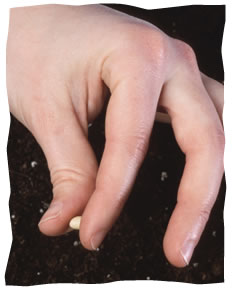
Question:
Can you explain why laws never seem to revert back to their original form? For example, some holidays are two days outside of Israel because of the difficulty with keeping time hundreds of years ago, which has since been resolved.
Answer:
Simply put, customs have the import of law since the Torah itself recognizes them as law. That makes sense, because the basis of Torah is not the book, but the people. How do we know the Torah is true? Because the people witnessed it, accepted it and passed down the tradition. So without tradition, we have no Torah.
But there's more to it than that. Really, your questions gets down to a core issue about Torah. What is the Torah, a book or a wisdom?
If the Torah were a book, then there would be "the real Torah" as it is written in the book, and "the dressed-up-with-customs Torah." Every once in a while, we might take off one set of dress-up and replace it with another—or do without it altogether. In other words, there would be the essential Torah-by-the-book and a disposable, optional set of customs.
But Torah is not a book, it is a Divine wisdom that enters into the world through the collective Jewish experience. What was written in a book some 3300 years ago is the wrapped-up Torah, like a seed containing the DNA for all the future. The Jewish People are the earth in which that seed was planted. And G‑d is the gardener. The difference being that a gardener never really knows how his plantings will grow, but this Gardener had everything in mind to begin with (being, as He is, beyond past and future). He plants the seed that contains everything packed tightly into nuances, codes and anomalies, and watches His wisdom unfold in history and tradition.
So when the Jewish collective consensus, including the learned rabbis, the wise grandmothers, the nursing mothers and the working men, all accept upon themselves a tradition that arises out of our understanding of the Torah, G‑d, so to speak, snaps His holy fingers and remarks, "Success! They got it!"
Now the answer to your question becomes obvious: How could we throw away G‑d's success?
Rabbi Tzvi Freeman, a senior editor at Chabad.org, also heads our Ask The Rabbi team. He is the author of Bringing Heaven Down to Earth. To subscribe to regular updates of Rabbi Freeman's writing, visit Freeman Filessubscription.
All names of persons and locations or other identifying features referenced in these questions have been omitted or changed to preserve the anonymity of the questioners.
© Copyright 2014, all rights reserved.
|
Your Questions
Do Jews Observe Personal Fast Days?
By Eliezer Zalmanov
|
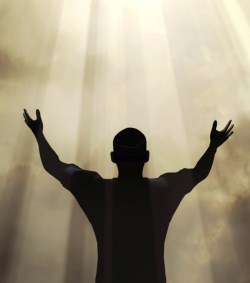
Question:
From what I understand, fasting is for the purpose of self-affliction and repentance. Can a person hold his or her own personal fast, in addition to the mandatory public fast days? If yes, are there special repentance prayers one can say on such a day?
Answer:
Historically, personal fasting has always been considered an accepted, indeed an optimal, method of repentance. It may be observed in times of personal or communal calamity in order to elicit divine mercy, or, more commonly, as penitence for personal wrongdoing. In times past it was very common for people to regularly designate personal atonement fasts.
The Talmud explains that fasting is in lieu of the sacrifice that one would bring following a sin – in the times that the Holy Temple stood in Jerusalem – in order to return to G‑d's good graces. As our Sages say, "May it be His will that He should consider the fat and blood reduced [by the fast] as if I offered it upon the Altar."
(For more about what is accomplished by fasting, see My Body and I. Though the article talks about Yom Kippur, the ideas therein apply to all fast days, personal and communal.)
Personal fasts last from dawn until nightfall.
In anticipation of a personal fast, it should be verbally accepted in advance. This is normally done during the afternoon prayers of the preceding day. Towards the conclusion of theAmidah, immediately before saying the passage of Elohai Netzor say: Hareini b'taanit yachid l'machar ("I will be observing a personal fast-day tomorrow").
On the fast day itself, there is a special prayer, Aneinu, which is added to the Shema Koleinu blessing of the afternoon Amidah. It can be found in your prayer book.
I should note that personal fasts are not very common anymore. Rabbi Schneur Zalman of Liadi (the Alter Rebbe) writes in the third chapter of Igeret HaTeshuvah that fasting – with the exception of mandatory public fast days – must never come at the expense of one’s health or strength. If fasting will weaken you to the extent that you will not be able to serve G-d that day with the same energy and vigor as you would have had you eaten—don’t. In fact, the Talmud is very clear about this: One who fasts despite the fact that it weakens him, is called a sinner.
In today's day and age, when most of us are used to eating three round meals a day, there is almost no one who can claim to be unaffected by fasting.
More importantly, it is the spirit of repentance, the true repentance, that comes along with fasting that counts.
So if we don't fast, is there another way to gain comparable atonement?
Yes. In the words of Daniel, when advising Nebuchadnezzar: "Redeem your sins with charity, and your wrongdoing by being kind to the needy."
This can be done by donating to a charitable cause the monetary value of the food you eat on a given day.
"Therefore, all who revere the word of G‑d are now accustomed to being unstintingly generous with charity, which is given in place of fasting, for the prevalent lack of strength prevents them from [fasting]."
I hope this helps.
Rabbi Eliezer Zalmanov
Rabbi Eliezer Zalmanov is co-director, along with his wife Chanie, of Chabad of Northwest Indiana, and a member of Chabad.org's Ask the Rabbi team.
All names of persons and locations or other identifying features referenced in these questions have been omitted or changed to preserve the anonymity of the questioners.
© Copyright 2014, all rights reserved.
|
Lifestyle
For Your Shabbat Table: Double Chocolate Fudge Brownies
By Miriam Szokovski
|
It's a cake, it's a cookie... it's a brownie! But not just any brownie. Possibly the very best brownie you will ever eat.
Seriously. Every time I make these I'm hailed as the Mighty Dessert Queen. But cast away your jealousy, for you, too, can earn the title of Dessert Royalty with this recipe (provided you don't show up with it at the same time I do!). Should that happen, alas, I will have to banish you from the Sweet Kingdom and label you eternal Dessert Dunce. Apologies in advance.
All kidding aside, these brownies will make you very, very popular, very, very quickly (unless someone has a nut allergy; then you might be in trouble). And they're not hard to make.
The chocolate chips are an important component of this dish, because they provide the chocolate flavor in the batter, and they're folded through with the nuts. So I strongly suggest you buy really good quality chocolate.
Melt 1 cup of chocolate chips and the butter/margarine over a double boiler. You can make a double boiler with a pot and a bowl, as pictured. Put an inch or so of water in the pot, put the bowl on top. The bottom of the bowl should not be touching the water, so use a smaller pot and a slightly bigger bowl. Put the chocolate chips and margarine in the bowl, turn the heat on and wait for it to melt.
When fully melted, take the bowl off and stir in the sugar. Add the eggs, vanilla and salt and mix. Stir in the flour and baking powder until batter is smooth. Stir in the other cup of chocolate chips and the nuts.
Pour the batter into a greased 10 x 10 square pan, or a 9 x 13 rectangle pan. Bake on 350 for 30-40 minutes. Let the brownies cool before cutting.
While they're baking, take your favorite arm chair and decorate it with balloons and streamers so you'll have a throne upon which to accept your Dessert King/Queen coronation. Congratulations!
Alternatively, you could spend that time coming up with the ultimate hiding place so you don't have to share them. (Hint: No one ever looks in the tool box!)
Serve with a scoop of ice cream, or just plain. For breakfast, lunch, dinner or any time in between.
Ingredients:
- 8 Tbsp. margarine
- 2 cups chocolate chips, divided
- 1 1/2 cups sugar
- 3 eggs
- 1 tsp. vanilla
- 1 tsp. kosher salt
- 1 1/4 cups flour
- 1/2 tsp. baking powder
- 1 cup pecans
Directions:
- Melt 1 cup chocolate chips with the margarine, until smooth.
- Stir in the sugar, eggs, vanilla and salt until incorporated.
- Add the flour and baking powder, mix until smooth.
- Fold in the pecans and the other cup of chocolate chips.
- Pour the batter into a 9 x 13 rectangle pan, of a 10 x 10 square pan. Bake on 350 for 30-40 minutes.
What's your signature over-the-top decadent dessert?
Miriam Szokovski is the author of historical novel Exiled Down Under, and a member of the Chabad.org editorial team. She enjoys tinkering with recipes, and teaches cooking classes to young children. Miriam shares her love of cooking, baking and food photography on Chabad.org’s food blog, Cook It Kosher and in the N'shei Chabad Newsletter.
© Copyright 2014, all rights reserved.
|
Lifestyle
Drawing of the Week: I am Joseph
By Shoshannah Brombacher
|
Artist’s Statement: Of all the awkward moments in history, this is one of the most awkward! Joseph was sold to Egypt by his brothers, it was a Divine plan. The brothers never expected to see him back, even less as the viceroy of Egypt! When they found out who they were talking to, were they afraid he would take revenge? You bet. They knew they had wronged him terribly. But Joseph did not take revenge. Sometimes that is the best revenge. Many Chassidic stories allude to this. Leave it to G-d. All that happened was His plan, and gam zu letovah - this, too, is for the good! Joseph has a pained expression on his face; he is torn between many feelings and emotions! Joseph is a person who saw it all....and yet he remained a tzaddik.
Shoshannah Brombacher studied ancient Near Eastern studies and codicology in Leyden (Holland), with her Ph.D. specializing in the medieval Hebrew poetry of the Amsterdam Sephardic-Portuguese community. She studied in Jerusalem, and lectured in Berlin and New York, where she devotes all her time to her family and her chassidic art. She painted from an early age, inspired by chassidic stories and Chagall works on her father’s bookshelves. She attended classes at an art academy, but considers herself “self-taught.” Her academic career, her passionate interest in chassidic life and her travel experiences (Europe, Egypt and Jerusalem) significantly influence the Jewish themes in her artwork.
© Copyright 2014, all rights reserved.
|
Jewish News
Rabbi Yehoshua Mondshine, 67, Acclaimed Scholar and Author, Passes Away in Jerusalem
By Eli Rubin
|
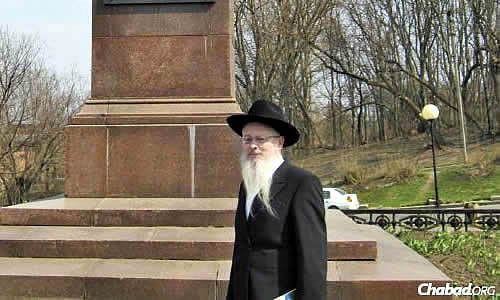 |
| The work and publications of Rabbi Yehoshua Mondshine continue to provide unparalleled insight into the intellectual and social history of Chassidism generally and Chabad specifically. |
Rabbi Yehoshua Mondshine, a bibliographer and researcher who discovered and illuminated many important aspects of Chabad history, passed away in Jerusalem on Dec. 24, the eighth day of Chanukah. He was 67 years old.
Mondshine’s involvement in research and publishing began while he was still a student and continued throughout his life. While he made his living as a bibliographer in the manuscript department of the National Library of Israel at the Hebrew University of Jerusalem, he made his name as a researcher and historian. His publications continue to provide unparalleled insight into the intellectual and social history of Chassidism generally and Chabad specifically.
The hours since his passing have seen an outpouring of heartfelt tributes. Rabbi Shalom DovBer Levine of the Central Chabad Library in New York, who worked closely with Mondshine for more than 40 years, wrote that “Yehoshua was the foremost scholar of Chabad Chassidism in a generation.” Professor Ada Rapoport-Albert of University College London mourned him as “an admirable scholar and a brave man of remarkable intellectual integrity,” and termed his passing “a great loss to Chassidic scholarship.” Professor Yehudah Mirsky of Brandeis University in Waltham, Mass., wrote that “his piety and commitment to solid scholarship went hand in glove, and he readily gave of his knowledge to the great and the unknown.”
Youthful Correspondence, Early Publications
Born in 1947 to a religious family in Tel Aviv, Mondshine studied at the Yishuv HaChadash Yeshivah. At age 17, following a correspondence with the Rebbe—Rabbi Menachem M. Schneerson, of righteous memory—Mondshine began studying at the Tomchei Temimim Yeshivah in Kfar Chabad under the spiritual guidance of Rabbi Shlomo Chaim Kesselman. In 1968, he married Rachel Leah Braufman of Kfar Chabad.
Mondshine’s correspondence with the Rebbe began around 1960, when he requested and received a blessing ahead of his bar mitzvah. Thereafter, he continued to write to the Rebbe, confiding his teenage anxieties and seeking spiritual advice. In one early letter that signified things to come, the 14-year-old Mondshine included a list of textual variants he had noticed in the Chabad prayerbook compared to earlier sources. Rather than supply him with answers, the Rebbe referred him to sources where he could explore the issues and discover the answers himself.
In 1968, Mondshine traveled to New York to study at the Central Chabad Yeshiva, at 770 Eastern Parkway in the Crown Heights neighborhood of Brooklyn, N.Y. While there, he embarked on his first major publishing project—taking the lead editorial role helping Rabbi Yehoshua Korf publish a new commentary to the Tanya. The Rebbe expressed great enthusiasm for this effort, reviewing and commenting on the manuscript before it went to print, and publicly expressing his satisfaction with the new publication.
Rabbi Mondshine in his earlier years
In the early 1970s, Mondshine was charged by the Rebbe to compose an introduction and indexes to the surviving writings of Rabbi Levi Yitzchak Schneersohn, the Rebbe’s father. In a poignant expression of personal appreciation, the Rebbe singled out Mondshine at a public gathering marking the 29th anniversary of Rabbi Levi Yitzchak’s passing. After presenting him with a token bottle of vodka, the Rebbe led the crowd in an enthusiastic rendition of the Chassidic dance tune particularly favored by his father.
A Scholar in the Rebbe’s Service
Under the Rebbe’s close guidance, Mondshine continued to work on indexing and publishing Chassidic texts, including the teachings of the second and third rebbes of Chabad, and those of the Rebbe himself. It was during this period that he began to draw on his knowledge of the manuscripts housed at Israel’s National Library, selecting important manuscripts, comparing different versions and preparing them for print.
In 1980, Mondshine published Migdal Oz, a hefty memorial volume incorporating many previously unpublished Chassidic texts. Different sections were devoted to Jewish law and Chassidic teachings, to Chassidic tales and memoirs, and to correspondence and other genres. The volume also included original articles on various aspects of Chassidic historiography and ethos.
Perhaps the most widely consulted of Mondshine's works is his two-volume compendium of Chabad customs, "Otzar Minhagei Chabad."
In 1982, Mondshine published an early and previously unknown manuscript of Shivkhei Ha-Baal Shem Tov (“Praises of the Baal Shem Tov”), the first collection of tales about the founding figure of the Chassidic movement. In an extended introduction and appendices, Mondshine examined the manuscript in correspondence to the various published versions of the text, probed related historiographical and bibliographical questions, and assessed the treatment and perpetuation of tales of the Baal Shem Tov in later generations of the Chassidic movement.
Levine at the Central Chabad Library, testified to the Rebbe’s deep appreciation of Mondshine’s scholarship. “The Rebbe valued his books and articles to an unprecedented degree, and would constantly demand that he add more and more,” he said. A discerning visitor to the Rebbe’s office will discover that Mondshine’s edition of Shivkhei Ha-Baal Shem Tovcontinues to grace the shelves.
The year 1981 saw the first of two definitive bibliographical works on the published writings of Rabbi Schneur Zalman of Liadi, founder of the Chabad school of Chassidism; the second appeared in 1984. Even while working on comprehensive works like the ones mentioned above, he continued to publish shorter articles in various journals, both academic and rabbinic, some of them under the pseudonym Yehoshua D. Levanon.
A Breakthrough of Broad Significance
Beginning in 1986, Mondshine began publishing his own journal, titled Kerem Chabad. The first two issues included articles by other authors as well. Though most of the material was Mondshine’s own work, some of it was left without attribution. The third issue comprised a collection of documents providing a comprehensive overview of the original Tomchei Temimim Yeshiva, founded in the town of Lubavitch, Belarus, in 1897. But it was in the fourth issue of Kerem Chabad that Mondshine made his most lastingly significant contributions to Chassidic historiography.
Mondshine produced groundbreaking works on Rabbi Schneur Zalman of Liadi, the founder of Chabad-Lubavitch.
In an issue spanning two large volumes, Mondshine published a previously unseen trove of documents from the Imperial Russian Archives, dating from the first and second imprisonments of Rabbi Schneur Zalman of Liadi. The cache included the original letter denouncing him to the tsarist authorities; official correspondence related to the arrest and to the subsequent investigation; Rabbi Schneur Zalman’s own handwritten testimony answering questions posed by government investigators; and a record of the tsar’s personal command that Rabbi Schneur Zalman be released, along with those who had been arrested alongside him.
In a series of supporting articles published alongside these documents, Mondshine marshaled a vast array of sources to recreate the social, political and religious context in which Chabad Chassidism was established and developed. An entire section of the journal was devoted to a bold re-examination of the struggle against the fledgling Chassidic movement. Two articles laid bare the intrigues of the Jewish community of Vilna, and showed that although the stubborn opposition of the Vilna Gaon—Rabbi Eliyahu ben Shlomo Zalman Kremer—may have been grounded in theological concerns, it was also influenced by the petty struggles of local power-brokers.
Mondshine’s revelations embodied a further breakthrough of even broader historical significance. In a 1992 article for The Jerusalem Report, David Assaf (now a professor at Tel Aviv University in Ramat Aviv, Israel) wrote: “There is little doubt that the libraries and archives of the former Soviet Union that were off-limits to researchers for so long contain additional hidden documents that can change what we know of Chassidism’s history. The documents now published by Mondshine are evidence of the vast research potential in these old-new treasures, locked away for 75 years.”
Scholarship and Piety, Satire and Real Life
More than two decades later, new documents continue to be unearthed, broadening the knowledge and deepening the understanding of Chassidism and its history. Throughout, Mondshine was at the forefront of Chassidic scholarship, continuing to publish article after article, volume after volume. Perhaps the most widely consulted of his works is his two-volume compendium of Chabad customs, Otzar Minhagei Chabad, mostly covering the festival periods of Tishrei and Nissan. This collection is exemplary for its combination of popular appeal, organized functionality, and its comprehensive and critical review of all relevant sources. Mondshine did not simply document Chabad customs, but also drew on his vast knowledge of other Chassidic groups to trace the similarities and differences between their traditions.
An undercurrent to all his work is the attempt to capture the true spirit of Chabad Chassidism; a spirit at once critical and honest, intellectualist and sincere. For Mondshine, this spirit did not remain aloof and theoretical, but extended to his service of G‑d in real life. As his childhood friend and longtime colleague Rabbi Dovid Meir Drukman pointed out, Mondshine consistently stepped beyond mere aspiration, customarily praying in the lengthy contemplative manner prescribed by Chabad teachings.
Professor Shaul Stampfer of the Hebrew University of Jerusalem added that besides his scholarly contributions and individual piety, another admirable facet of his personality should not be forgotten: his talent for mischievous satire.
Professor Shmuel Feiner of Bar-Ilan University in Ramat Gan, Israel, recalled his experience working under Mondshine in the manuscript department while still a student, and described him as one of his “most influential” teachers. “Besides being a distinguished scholar of Chassidism, wrote Feiner,“there were no limits to his curiosity and broad knowledge. He was also well-versed in the Hebrew newspapers of the Haskalah [a modernizing Jewish movement of the 19th century], and the complex history of the Haskalah movement. His path on the border between two worlds came together in a man of honesty, humility and fairness, as well as openness, courage and subversion, along with firm commitment to the world of Chassidism.”
Dr. Naftali Loewenthal of University College London—an individual who similarly combines the two realms of Chassidism and scholarship—also recalled Mondshine’s integrity, along with his broad and sound knowledge, adding, “his books and articles will live on.”
In the garden of the Israel National Library on Hebrew University of Jerusalem's Givat Ram campus
Chassidic Identity, Academic Methodology
In his 1992 article, Assaf described Mondshine’s special ability to uncompromisingly combine his unambiguously Chassidic identity with the rigors of academic scholarship. He wrote that Mondshine “labors on the margins of the professional academy, but he knows well how to use the tools of that world. ... His writing is characterized by comprehensive and impressive knowledge, originality, provocativeness—and a willingness to battle against what he sees as distortion of Chabad’s image by outsiders.”
Indeed, Mondshine wielded the scholar’s pen with surprising force. His textual knowledge, analytical skills and perception as a Chassidic insider were sometimes complemented by biting sarcasm to undo a thesis he disagreed with. As a Chassid operating in the academic sphere, he was unapologetic and unintimidated. Elements within each of the communities he straddled may have accused him of being under the sway of “external” influences, but Mondshine understood that the tools of critical research would help Chassidim better understand their own tradition.
Though Assaf mentions Mondshine’s defense of Chabad’s image from outside distortion, Mondshine was just as quick to challenge internal distortions of Chabad historiography and ethos. Chabad itself straddles a fine line between religious enthusiasm and intellectualism, and, especially in his later years, Mondshine fought an internal crusade against the propensity for such enthusiasm to deteriorate into external hype. According to Drukman, “he was a man of truth, both in the sense that he loved truth and in the sense that he hated falsehood.”
Mondshine sought to remind his fellow Chassidim that the essence of the Chabad approach is pnimyut—a Hebrew word meaning “inwardness,” and denoting a combination of critical self-awareness and sincerity. Without a critical effort to preserve Chabad’s collective history, the authentic spirit of the movement would be all too easily eroded.
Mondshine’s piety was disciplined, gentle and good-humored, but he was in no sense a pushover. In recent years, he became renowned—some might say notorious—for his sharp and often satirical critique of newly popular beliefs, behaviors and attitudes that he saw as utterly antithetical to the true spirit of Chabad teachings. As a scholar, Mondshine did not retreat into the ivory tower and let the world pass him by. In a series of more than 70 articles published on the shturem.net website, titled Sepurim U-Gilgulaihem, he combined scholarship and wit to challenge conventional thinking—educating and entertaining those who sympathized with his approach, and scandalizing those who did not.
In "Sepurim U-Gilgulaihem," Mondshine combined scholarship and wit to challenge conventional thinking.
At the same time, Mondshine continued to publish more serious work, both individual articles and as part of complete volumes. “The First Imprisonment” and “The Last Journey,” both of which were reviewed here, are two of his more recent books. Speculation has it that two new works are close to completion: a comprehensive account of Rabbi Schneur Zalman of Liadi’s second imprisonment; and a critical edition of the early and influential work of Chabad historiography, Beit Rebbi.
Mondshine was predeceased by his first wife, Rachel Leah, in 2006, and is survived by his second wife, Devorah, in addition to his children: Rabbi Dovid Mondshine of Moscow; Rabbi Levi Yitzchok Mondshine of Smolensk, Russia; Rabbi Hillel Mondshine of Jerusalem; Mrs. Chaya Akselrod of Kiryat Malachi, Israel; and Mrs. Dina Segal of France.
© Copyright 2014, all rights reserved.
|
Jewish News
Life Support in Romania for Israeli Medical Students
By Chaya Schley, Chabad.edu
|
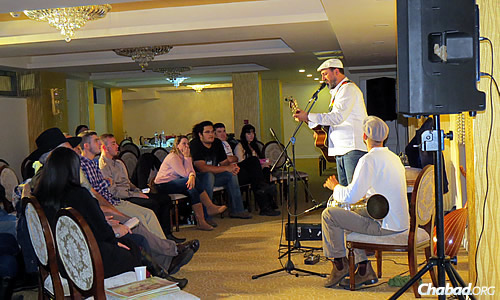 |
| The newest couple at Chabad Lyubavitsh of Romania—Rabbi Dovber and Fraidy Orgad—hosted a welcoming event in November featuring Israeli actor Golan Azulay, who spoke about his journey to becoming religious. |
When Ran Frenkel moved from Ra’anana, Israel, to Bucharest last summer to begin his medical studies, he had no idea what he’d find in terms of Jewish life in the Romanian capital.
“Israel is a place where you don’t have to try very hard to be Jewish. I knew Romania would be 180 degrees from that, but I didn’t really know what to expect,” says the 28-year-old.
Luckily, Frenkel’s move roughly corresponded with Rabbi Dovber and Fraidy Orgad’s arrival in Bucharest, where they relocated this past August in order to establish a Chabad on Campus “home away from home” for some 200 Israeli medical students, like Frenkel, who are currently studying in Bucharest.
The Orgads both grew up in Kfar Chabad, Israel, where they married in 2010. They have a 4-year-old son, Schneur Zalman, and a 2-year-old daughter, Chaya Mushka.
Becoming shluchim, or Chabad emissaries, was a “dream” for both of them, they say. Fraidy Orgad, 23, had volunteered at Jewish summer camps in Israel while in high school, and Rabbi Orgad, 28, had worked with shluchimserving communities in Southampton, N.Y.; Moscow; and Belarus during his rabbinical studies.
The couple worked in Israel after getting married: Fraidy as a first-grade teacher in a public school, and the rabbi as a manager of popular local wedding hall.
Guests partake in the meal before the start of Yom Kippur, the Jewish Day of Atonement and a fast day.
“My dream was to go to the Kinus Hashluchim as a shaliach,” Rabbi Orgad says, referring to the International Conference of Chabad-Lubavitch Emissaries that takes place every fall in New York.
Last spring, they heard of the opportunity in Bucharest, and within a few weeks had traveled to the city. It was their first trip abroad as a married couple.
‘Students Are the Future’
Approximately 3,200 Jews live in Romania, according to a 2011 census, but the numbers have increased in recent years as Israelis have moved to Bucharest to work and study in the capital.
Rabbi Naftali and Risha Deutsch, co-directors of Chabad Lyubavitsh of Romania, moved to Bucharest in 1999, establishing a Chabad center with a synagogue, preschool, mikvah and other Jewish services.
Rabbi Deutsch says working with students in Bucharest and other cities, such as Cluj and Iasi, has been a key component of Chabad’s activities in Romania from the outset.
“Students are the future,” states the rabbi in no uncertain terms. In recent years, he and his wife decided to seek a couple to work directly with the students. After interviewing potentialshluchim for more than a year, they met the Orgads, whom they felt would be just the right fit.
“The Orgads have a lot of energy, they know how to work, and they have experience. I’m very happy with how many students they’ve gotten to know in just three months.”
‘Come, Talk, Feel Like Family’
The Orgads moved to Bucharest with their two young children in August, and immediately set out to find an apartment that would serve as both their home and as a home base for student programming. After a few weeks, they found an apartment large enough to host students for Shabbat meals and other events, and centrally located to the medical campus.
They kicked off their programming with an event for the start of the school year. The turnout was modest, but the Orgads were undaunted, and as word spread, they soon had 20 or 30 students turning out for their events.
Last month, they hosted a party featuring Israeli actor Golan Azulay, who spoke about his journey to becoming religious. This week, they’re in the midst of celebrating their first Chanukah in Romania.
Much of the interaction between the Orgads and students has been informal, connecting during intimate Shabbat meals and over coffee during the week.
“One of the important reasons we are here is just to listen,” says Rabbi Orgad. “A lot of students are far from family, far from Israel, far from their culture. Their studies are difficult, and they just need someone to listen to them. They have a home here, where they can come to talk and feel like family. That’s the best thing we can offer them.”
Fraidy Orgad talks about student support and connections at a time when many are away from home and stressed because of their work loads.
Fraidy points out that the Israeli student community has been isolated, with few opportunities in their busy schedules to meet and socialize. “We’re focusing on unity,” she adds. “We really want to make a student community, so that they will all be connected, to support each other.”
Ran Frenkel agrees, saying “it’s a great way to meet students. I only knew one or two other Israeli students before, but I’ve met a lot more through their events.”
Fraidy adds that it requires persistence to reach out to the busy medical students, who juggle classes, study sessions and exams. “When they tell me they have tests and can’t come, I say: ‘I’m not giving up on you. Come next week!’ ”
Frenkel’s fiancée, Bareket Baron, 21, moved this past summer from Holon, Israel, to Bucharest, where she is completing premedical studies. She has regularly joined the Orgads for Shabbat meals, sometimes sleeping over at their apartment.
“The Shabbats we spent with them were amazing. It really helped you to feel you’re home like with your family,” she says.
Rabbi Orgad hosts a birthday party for one of the students, typical of the intimate kinds of get-togethers they are fostering at first.
Both Frenkel and Baron are looking forward to a student Shabbaton the Orgads are planning this winter, to be held over a weekend in the mountains outside of Bucharest. They think it will be a great opportunity to take a break from studying and connect with fellow Jewish students.
Frenkel says he has just one suggestion for the Orgads: “If Chabad could send some shluchim to do my exams for me, I’d be very glad!”
Women make challah and get to know one another in a casual setting.
The rabbi leads activities at a recent Chanukah event held on the second night of the holiday.
Students unwind, converse and enjoy refreshments during Chanukah.
© Copyright 2014, all rights reserved.
|
Jewish News
A Wounded IDF Soldier’s Chanukah Miracle
By Menachem Posner
|
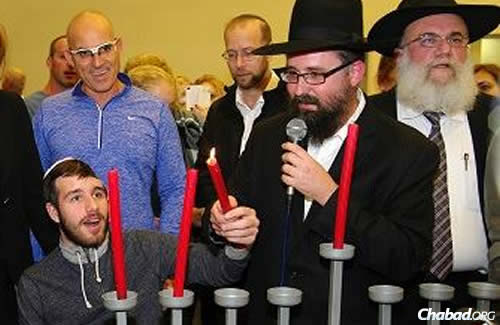 |
| It was a Chanukah to remember for recovering Sgt. Ohad Benyishai, shown here holding the "shamash" (helper candle) to light the menorah. |
The first time Rabbi Menachem Kutner and Rabbi Yossi Swerdlov of the Chabad Terror Victims Project met Sgt. Ohad Benyishai of the Israel Defense Forces, he was lying unconscious in a hospital bed, having sustained significant trauma to his head. He had been critically injured this summer during “Operation Protective Edge” in Gaza, where he was deployed with his elite Egoz commando unit. At that point, it was uncertain if he would survive.
In the months that followed, Benyishai regained consciousness and slowly began relearning how to function. With great effort, he mastered the Hebrew alphabet, and had even managed to say two words, ima (mom) and abba(dad), but no more.
On the second night of Chanukah, the rabbis visited the Sheba Medical Center in Ramat Gan, where he was recovering. There, around 70 wounded soldiers, their families and Chabad volunteers gathered for a special celebration and menorah-lighting.
Benyishai was invited to light the menorah together with Kutner. The rabbi said the blessings, and Benyishai held the shamash (helper candle) with his functional left hand. With the rabbi’s assistance, he lit the two candles.
Then suddenly, the room went quiet as Benyishai slowly began to mouth the words to “Haneirot Halalu” and “Maoz Tzur” along with Kutner. The familiar tunes that he had learned during his childhood had brought back his ability to speak. He was talking!
His parents ran to him, and showered him with hugs and kisses with tears streaming down their cheeks.
They had their Chanukah miracle.
Please continue to pray for the ongoing recovery of Ohad ben Erica, and the brave men and women of the IDF who have sacrificed so much to protect our precious homeland.
© Copyright 2014, all rights reserved.
|
Jewish News
Chanukah Warmth in Chilly Philly 40 Years After First Public Menorah
By Carin M. Smilk
|
 |
| Vehicles line up on John F. Kennedy Boulevard in Philadelphia, waiting for the start of the annual car-menorah parade sponsored by Chabad. (Photo: Cindy Monyek) |
No one really minded the cold. It didn’t seem to affect the kids at all, who before the start of the annual car-menorah parade on Saturday night in Philadelphia were running back and forth next to the growing lineup that included spacious family vans, tiny Smart cars and a mini yellow school bus filled with yeshivah students, singing and dancing while they waited for the procession to begin.
The motorcade of nearly 150 cars began inching down John F. Kennedy Boulevard nearly 20 blocks to Independence Mall, led by a festive float that blasted Chanukah music along the way. Folks on the sidewalks waved and clapped as the Chabad-sponsored car line snaked its way eastward, past the flags of different countries that adorn the boulevard, past five-star hotels, past restaurants and shops, and City Hall.
People parked their cars—with menorahs of different shapes and sizes attached to the roofs—and filed to the site of the lighting of a 32-foot public menorah. Jelly doughnuts were doled out to the crowd as they listened to Chanukah music, watched a juggler perform, did a little dancing to keep warm as the temperature hovered around the freezing point.
Rabbi Abraham Shemtov—regional director of Chabad-Lubavitch in Philadelphia and chairman of Agudas Chassidei Chabad, the umbrella organization of the Chabad-Lubavitch movement—took some time to greet families and speak to friends before stepping into a cherry picker to light the fifth candle of the eight-day holiday.
Assisting him was Ruben Amaro Jr., a Northeast Philadelphia native, former baseball player and now general manager of the Philadelphia Phillies.
Shemtov noted that 40 years ago, in 1974, he first set a small wooden menorah there, fashioned with the help of yeshivah students. A replica of that first Chanukah symbol stands near the enormous one he was about to ignite.
And then, with all heads turned to the sky, the rabbi lit the candles, noting how the tradition of public menorahs, so common all over the world in the 21st century, started right there—religious freedom of expression at the very spot where the nation’s freedom was formally declared.
Inching their way past City Hall and down to Independence Mall. (Photo: Cindy Monyek)
A juggler performed for the crowd, and jelly doughnuts were distributed while the crowd waited for the big event. (Photo: Cindy Monyek)
Rabbi Abraham Shemtov on the right in the cherry picker, assisted in the candle-lighting by Ruben Amaro Jr., the general manager of the Philadelphia Phillies on the left. (Photo: Cindy Monyek)
Shemtov placed the first public menorah in America near the same site where he lit the Chanukah candles on Saturday night, 40 years later. (Photo: Cindy Monyek)
© Copyright 2014, all rights reserved.
|
Chabad.org Magazine - Editor: Yanki Tauber
___________________________________
|
|


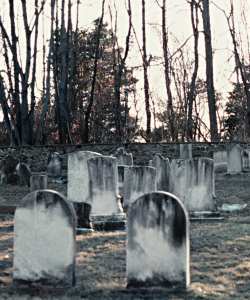



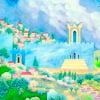
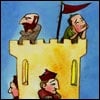
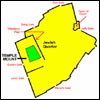


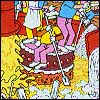
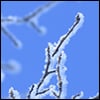
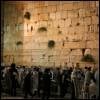


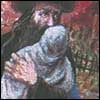
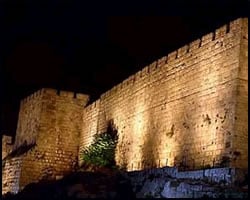


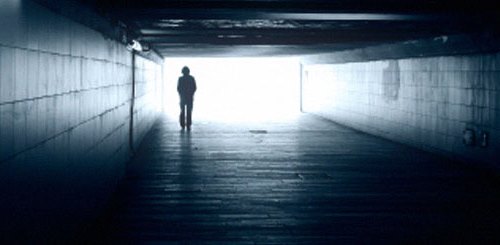











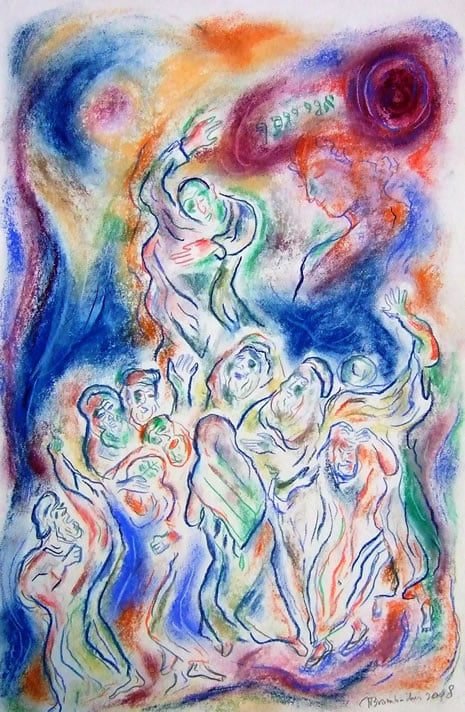


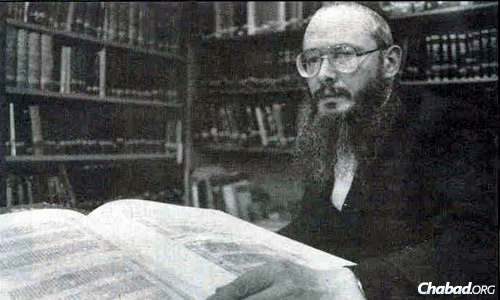
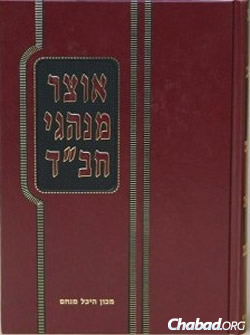
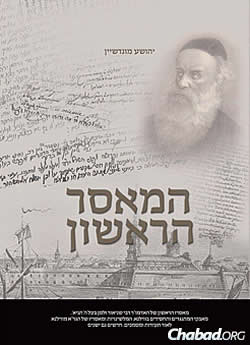
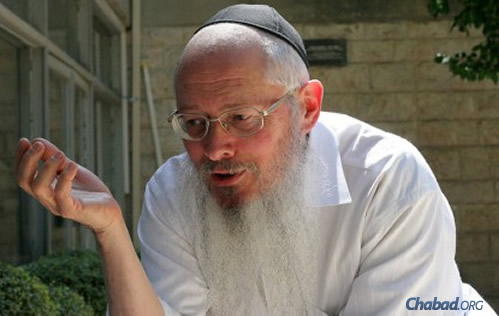
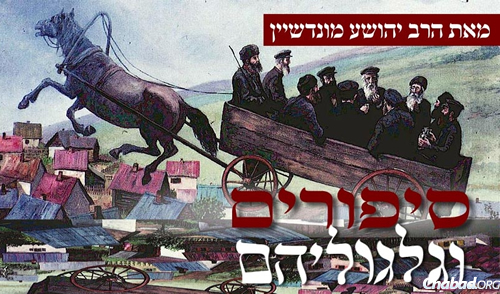
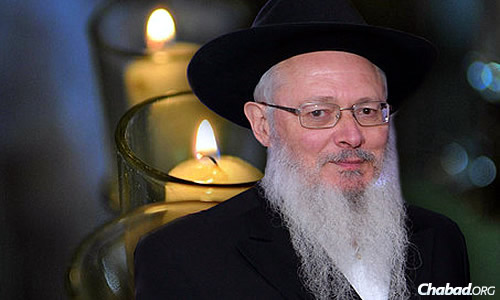

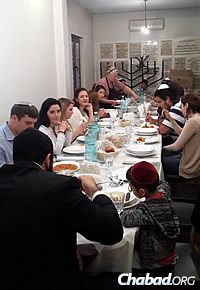
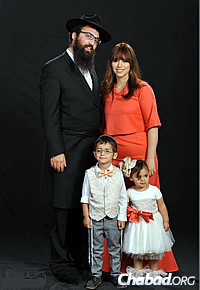

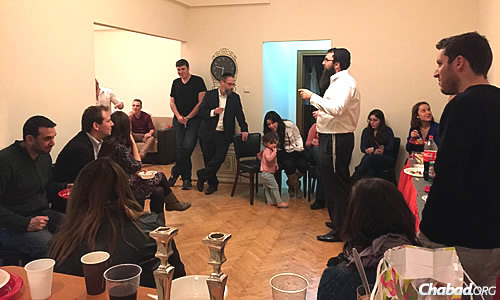
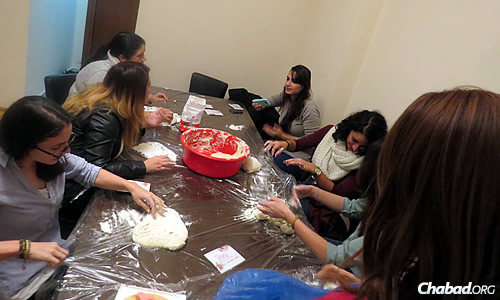

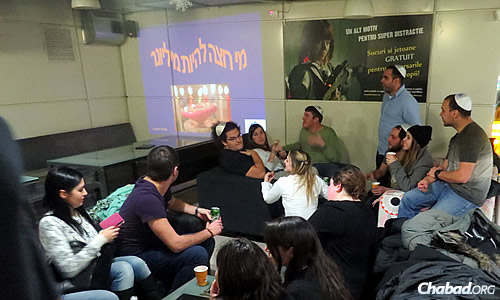


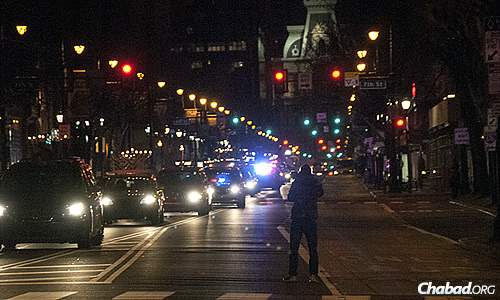
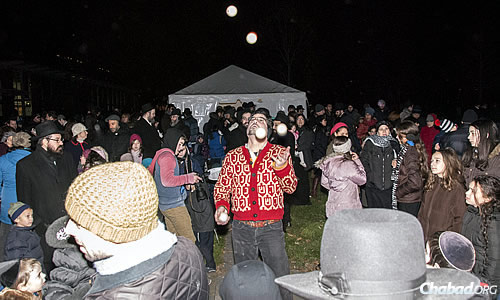
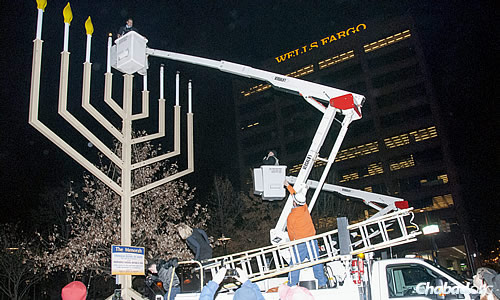
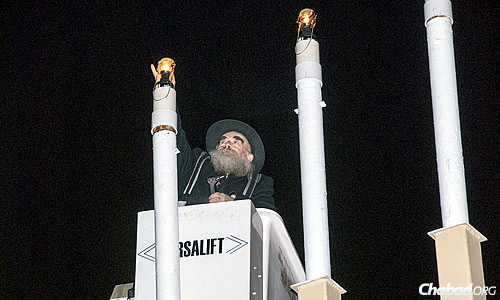
No comments:
Post a Comment